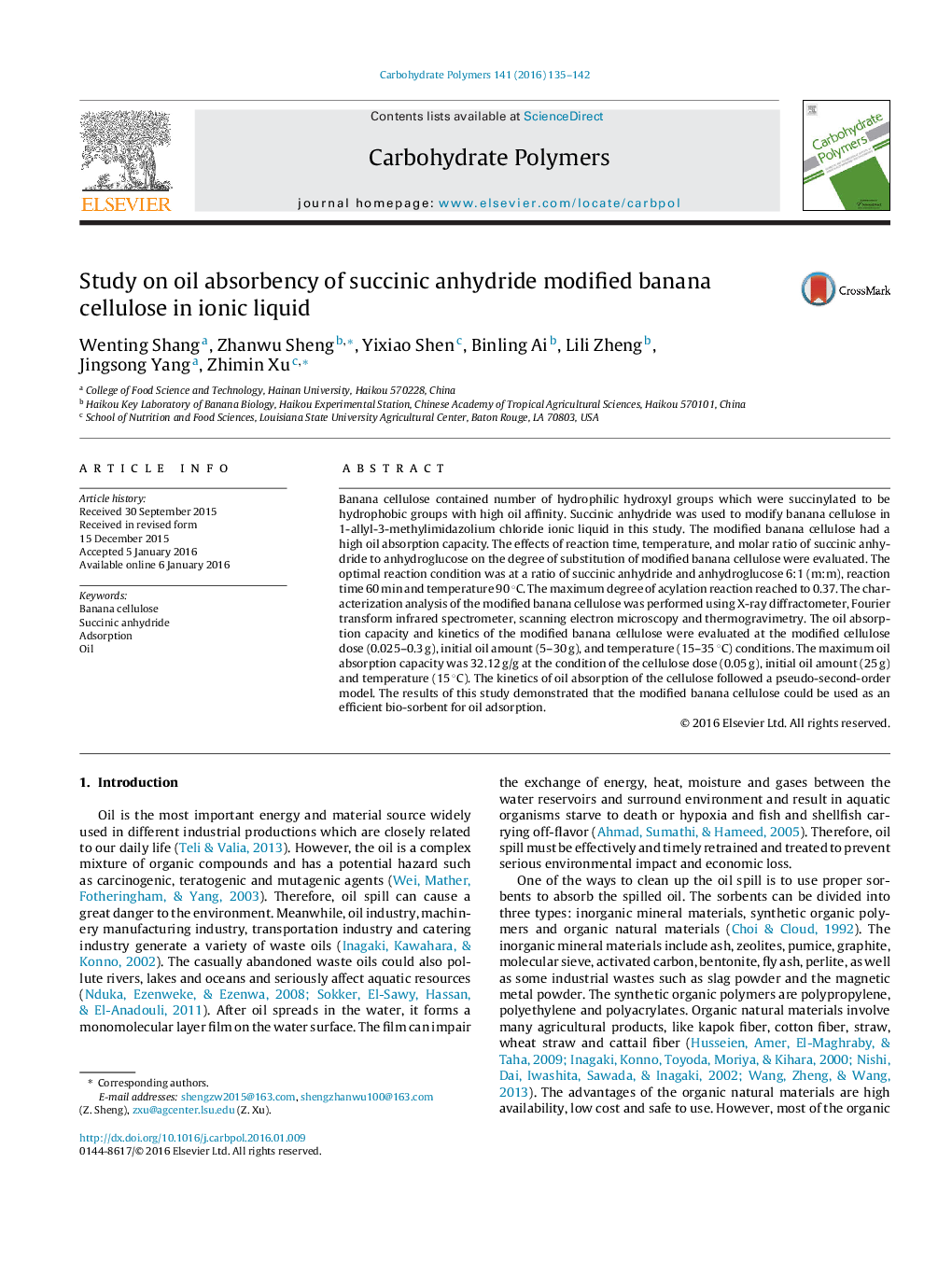| Article ID | Journal | Published Year | Pages | File Type |
|---|---|---|---|---|
| 1374502 | Carbohydrate Polymers | 2016 | 8 Pages |
•Banana cellulose was acylated by succinic anhydride in an ionic liquid.•The modified cellulose had a high oil absorption capacity.•The absorption kinetics was in a pseudo-second-order.•The results could provide a unique way to utilize the banana byproduct.
Banana cellulose contained number of hydrophilic hydroxyl groups which were succinylated to be hydrophobic groups with high oil affinity. Succinic anhydride was used to modify banana cellulose in 1-allyl-3-methylimidazolium chloride ionic liquid in this study. The modified banana cellulose had a high oil absorption capacity. The effects of reaction time, temperature, and molar ratio of succinic anhydride to anhydroglucose on the degree of substitution of modified banana cellulose were evaluated. The optimal reaction condition was at a ratio of succinic anhydride and anhydroglucose 6:1 (m:m), reaction time 60 min and temperature 90 °C. The maximum degree of acylation reaction reached to 0.37. The characterization analysis of the modified banana cellulose was performed using X-ray diffractometer, Fourier transform infrared spectrometer, scanning electron microscopy and thermogravimetry. The oil absorption capacity and kinetics of the modified banana cellulose were evaluated at the modified cellulose dose (0.025–0.3 g), initial oil amount (5–30 g), and temperature (15–35 °C) conditions. The maximum oil absorption capacity was 32.12 g/g at the condition of the cellulose dose (0.05 g), initial oil amount (25 g) and temperature (15 °C). The kinetics of oil absorption of the cellulose followed a pseudo-second-order model. The results of this study demonstrated that the modified banana cellulose could be used as an efficient bio-sorbent for oil adsorption.
